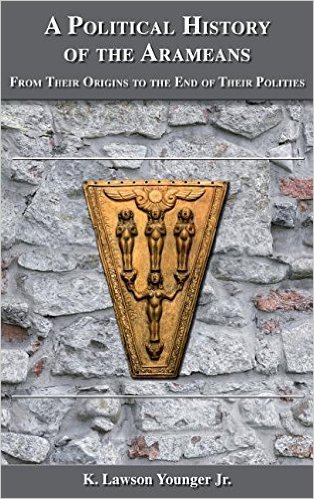by Chris McKinny
The much-anticipated
NIV Cultural Backgrounds Study Bible was released yesterday and is now available for purchase in several different
print editions ($49.99 and up) and also on
Olive Tree ($19.99). The notes and essays were written by John Walton (OT) and Craig Keener (NT).
While I have enjoyed using (and learning from) various sections of the NIV Cultural Backgrounds Study Bible over the last month (including at Sunday School and church), this review will cover the study Bible portion associated with the Book of Joshua.
Besides the extensive study notes that accompany each chapter, the study Bible portion for Joshua includes 6 essays (Land Grants, Divine Warfare, The Fall of Jericho, Altar on Mount Ebal, The Sun Stands Still and the Moon Stops, and The Northern Campaign), 3 maps, and 7 photos. The maps and photos are helpful in illustrating the study notes and essays. The essays are particularly interesting, as they provide a more in-depth discussion of larger ideas associated with the biblical text in connection with historical or cultural issues. Of special note, is the essay on “Land Grants,” which Walton argues is the theoretical framework for the second half of Joshua that includes long lists of towns and boundary descriptions (Josh 13-21). The essay on the “Fall of Jericho” (and the accompanying notes to the various conquest narratives) provides a succinct discussion of the issues and contemporary ancient Near Eastern textual background without taking a side in the Early or Late Date Conquest/Exodus debate. The longest essay, “The Sun Stands Still and the Moon Stops,” is also the most controversial, as Walton argues that Joshua 10:12-13 refers to Joshua “praying for the Amorites to see a bad omen,” as opposed to the traditional viewpoint, which understands Joshua’s prayer as a request for more time to destroy his enemies.
In general, the notes prioritize reading the biblical text within its ancient Near Eastern literary context. This should come as no surprise to readers who are familiar with Walton’s previous work in the Zondervan Illustrated Bible Background Commentary, Ancient Israelite Literature in its Cultural Context, Ancient Near Eastern Thought and the Old Testament Introducing the Conceptual World of the Hebrew Bible, etc. As someone who has studied large portions of Joshua over the course of a PhD dissertation, I was struck by Walton’s broad grasp of the contemporary literature, archaeological data, and historical geographical details. Walton’s writing is academic, and includes discussions of many ancient Near Eastern cultures and literary works that may be unknown to readers, however, his language is accessible to the student and non-specialist.
I disagreed with a few of his interpretations in the notes (e.g., Josh 9:17 – the “third day” refers to the third day “after they made the treaty with the Gibeonites” not the third day from their journey from Gilgal [which Walton assumes is near Shechem, it is, in my opinion, more likely the Gilgal near Jericho] to Gibeon). Also, I personally would have preferred to see more discussion on the historical geography of some of the more detailed town lists (e.g., Josh 15; 18 – perhaps in the form of a chart), but I understand that this is largely an issue of space concerning which editorial choices have to be made. The more abbreviated historical geographical and archaeological discussions highlight the fact that the ancient Near Eastern cultural customs, ideas, and their parallels with the Hebrew Bible/Old Testament (and presumably Keener’s notes on the NT) are the distinctive quality of the study Bible. This distinction is particularly noticeable when it is compared to the NIV Archaeological Study Bible (edited by W. Kaiser and D. Garrett). The latter is primarily focused on archaeological illustrations of the biblical text, whereas the NIV Cultural Background Study Bible is primarily concerned with illustrating the biblical text by showing parallels with other contemporary ancient Near Eastern Literature.
This is important for readers to understand. Broadly defined, biblical cultural backgrounds includes the fields of archaeology, geography, language, customs, and ideology (as expressed in literature). All of these are present in the NIV Cultural Backgrounds Study Bible, but ancient Near Eastern literary parallels, cultural customs, and concepts are the main focus. As far as Study Bibles go, this focus is completely unique, and, in my opinion, should make the NIV Cultural Background Study Bible a “must-have” for serious Bible students who are interested in the larger biblical world.
